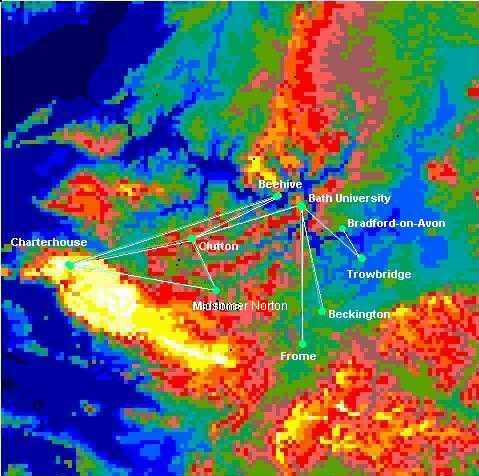
THE WEST OF ENGLAND OPEN AMATEUR & COMMUNITY
WIRELESS COMPUTER NETWORK
PROJECT INFORMATION
Pilot Project sponsored by AMBINET LIMITED

Henry O’Tani: Altec Scientific & Technical Services 23 Bennett Street, Bath , Avon, BA1 2QL.
Tel: O1224 789144 http://altec.members.beeb.net
WEST OF ENGLAND OPEN AMATEUR & COMMUNITY
WIRELESS COMPUTER NETWORK
PROJECT INFORMATION
Pilot Project sponsored by AMBINET LIMITED
Contents
Executive Summary
Background
Citizens Wireless Community Networks:
Participants
Feasibility Study
Broadband Amateur Radio
New Amateur and Community WLANs
WLAN Adapters
Congestion from over-use no problem!
Financial Advantages
The Political Dimension
The Pilot System
Options for Test
Future development
Security
Community Owned & Managed WLANs
Wider Applications
Ethos
Glossary of terms
Executive Summary
Licence exempt Wireless LANs (WLANs) at 11Mb/sec (IEEE 802.11) are a technical innovation which releases the potential of computer "Ethernet LANs" from being confined to "WIRES in buildings" making it possible to develop something entirely new in ICT : Namely: "Open Amateur & Community Wireless Computer Networks".
Community owned and managed (via a local non-profit-making telecentre, community association, club or mutual co-operative) "amateur" wireless computer networks offer open toll free access, completely releasing participants from the burden of local internet call charges and presently offer a superior access to all internet services than any existing technology possible over telephone wires (including ADSL at 2Mbits/sec).
The purpose of this project is to demonstratee the applicability of Amateur WLAN technology to communities and demonstrate the overall practicalities of the entirely new concept of Open Amateur & Community Wireless Computer Networks".
Sponsorship has been obtained to provide linking components and peripherals to enable several West of England population centres to interconnect at very high speed.
Continual live media and high quality video conferencing and images transfer between sites is identified as an important and exciting new feature made possible only through broadband connectivity.
Background
"Citizens Wireless Computer Networks":
With the "sell-off" of franchises for commercial "3rd Generation cordless networks" there now exists a stronger case than ever for retaining and defending a modest part of spectrum to be kept apart for future Non-Profit and Non-Commercial Broadband Services (in Public and Private Education, Scientific Research and Development, Recreation and "Play"). The ICT equivalent perhaps of a "Citizens Wireless Band"......
Participants:
A-Antenna - a firm managed by Richard Banbury with exclusive development rights on various high gain antenna solutions (inc. a unique range of >20dBi omnidirectional base station antenna products).
Altec Scientific & Technical Services. Design & Development consultancy business.... Source of initial creative project plan and feasibility study... ( Henry O'Tani: Amateur Radio enthusiast "originator and promoter of the community WLAN concept") http://altec.members.beeb.net
Ambinet Ltd. Main commercial sponsor of this project, Ambinet are desirous to "prove" its patented "range extending technology for licence exempt and low power wireless network systems" and has agreed to fund and support the West of England WLAN Pilot Project as part of its ongoing business development strategy for Wales based demonstrations.
A-LAN Distribution Ltd. A mail order and retail firm set up to facillitate the prompt & efficient supply of WLAN commodities for consumers.
Internet Society: National ISOC chairman Christian Larrinaga is interested in using the "new megaband network" as a platform for test running various components of the putative IPv6 Internet Protocol.
Mendip Amateur Radio Repeater Group: The Mendip Repeater Group has been established for over 25 years as the principal West of England amateur radio repeater providing society. www.mendiprg.freeserve.co.uk
Telepole Ltd: An engineering firm managed by Alun Person set up to manufacture and install WLAN systems.
University of Bath Radio Society: Students and staff at Bath's first university with the "Wireless Revolution" hoping to expand its membership base from the Schools of Mechanical and Electrical Engineering where it has been mainly for 25 years or more.
Feasibility Study:
A practical result of this study will be to demonstrate the feasibility of WLAN technology working for rural communities and the practicalities of the entirely new concept of "Open Amateur & Community Wireless Computer Networks".
Broadband Amateur Radio
In the United Kingdom and many other parts of the world including USA & Canada, use of IEEE 802.11 equipment overlaps the standard Amateur Radio Licenced 2.4 GHz allocation. This licence permits unlimited antenna gain and the notional use of transmitter power amplifiers and receiver low noise mast-head amplifiers up to 2450MHz.
Licenced radio amateurs using just better aerials, can anticipate reliable working up to 25 Km (18 miles) line-of-sight distance from a licence exempt WAP.
Much better performance (over obstructed paths) may be had with higher gain antennas at each end, sector directional arrays or amateur licenced power amplification.
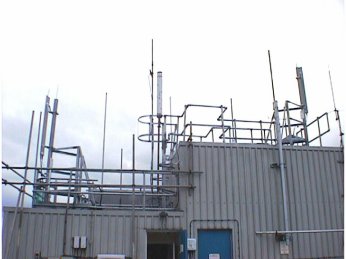
Amateur Digital, Radio & Television Antennas at University of Bath.
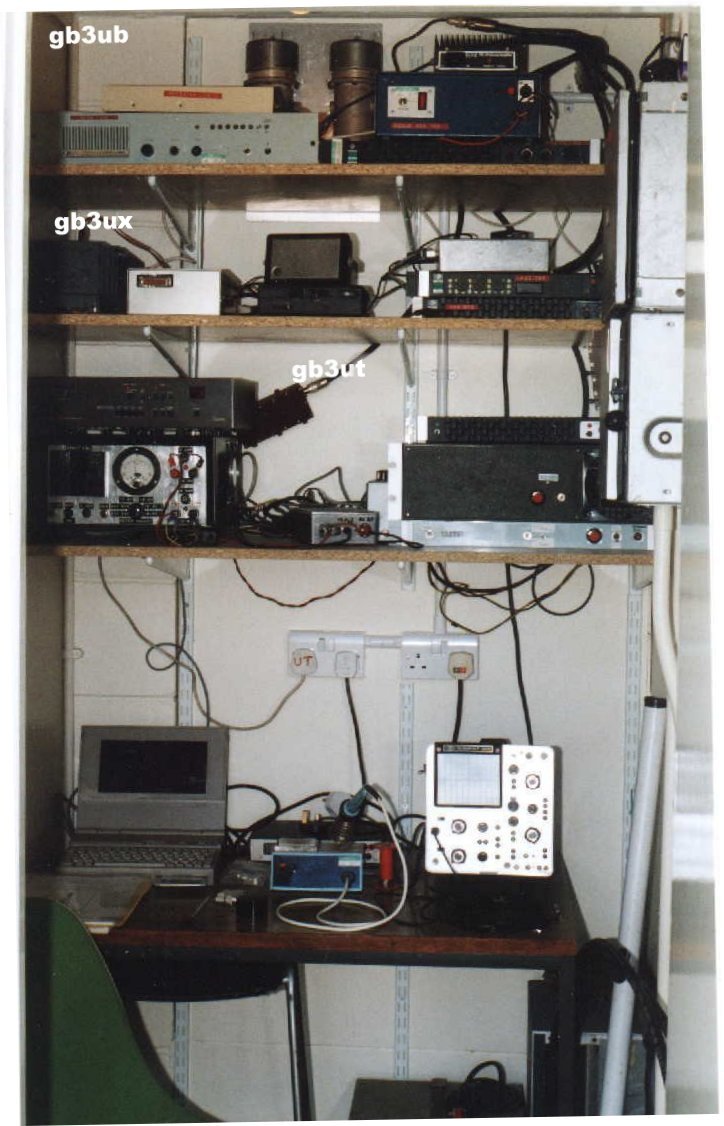
Home-made Amateur Digital, Radio & Television
Repeaters (University of Bath Radio Society)
Figure 2. Typical DIY Amateur Radio Installations (University of Bath Radio Society).
New Amateur and Community WLANs
Licence exempt Wireless LANs (WLANs) at 11Mb/sec (IEEE 802.11) are a technical innovation which releases the potential of computer "Ethernet LANs" from being confined to "WIRES in buildings".
This makes it possible to develop something absolutely new in ICT, Namely: "Open Amateur & Community Wireless Computer Networks".
Open: because apart from terrain it has no physical restrictions..
Amateur: because its motivated from kindness L. ama "for love of"..
Community: because it can only start and run efficiently if operated as a local social activity for the mutual benefit of all who participate.
The Wireless Access Point (WAP) (or community antenna) is usually mounted high and essentially anywhere that is practical as long as the desired radio coverage is obtained. The English village church usually at the centre of the village with a tower or spire, tall chimney, public building or water tower would be an ideal location. Church authorities might welcome the idea of facilitating church services being "Webcast" through this new media. If the village is on a narrow strip of land such as along a river valley, a reasonable sized parabolic antenna could give exceptional range increases of over 30 times in a roughly 6 degree wide beam.
A single wireless access point can support a large group of maybe 100 or more simultaneous users as effectively as 100 BT ISDN telephone connections but typically with (specification IEEE 802.11) at a range of not more than a couple of hundred metres in free space and much less via obstructions at the very restricted power levels specified for licence exempt users.
The basic IEEE 802.11 licence exempt system is designed to normally offer an outdoor range of only several hundred meters. In an open network however any user can provide a "stepping stone" for any other so if WLAN cards were as common as computer modems (in cities at least) there would be the possibility of "amateur & community WLANs" with basic equipment, (such a scheme as the "www.consume.com" model) but everyone would need to get their WLAN cards at the same time for everyone to be connected to each other!.
In small villages this is not the case. As soon as a central community enterprise such as a Village Shop, Post Office, Library, Public House or Telecentre sets up a wireless access point on a "server", all WLAN card equipped computer users up to a quarter mile (440 metres) radius may choose to connect to it.
WLAN Adapters:
End users access the WLAN through Wireless Local Area Network Interface Adapters ("WLAN Adapters").
WLAN adapters whether PCMCIA, PCI or USB provide an interface between the client network operating system (NOS) and the airwaves (via an antenna). The nature of the wireless connection is transparent to the NOS.
Those implemented as USB devices are ideal for notebook and desktop computers and are particularly useful for obtaining the longer range performance required during the introductory period enabling the adapter itself to be positioned in a weatherproof box out of doors high up on a roof...or feeding a large parabolic reflector.
(Figure 3).
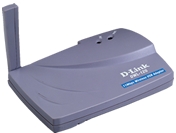
Figure 3.
WLAN Adapter (D-Link USB type DWL-120)

Figure 4.
Advanced 11Mb/sec Access Point (Intel type 2011B)
The above "top end of the market" Intel 2011B Access Point has a number of advanced features such as diversity antenna and variable transmitter output power under software control. These units are freestanding or connected to a wired LAN where they can provide LAN to LAN bridging.
More sophisticated network functions may also be performed by stand-alone units such as automatic routing, enabling AP to AP bridging or "daisy chaining"....
Congestion from over-use no problem!
From a very thinly spread introduction of licence exempt WLAN nodes (to be set up initially by the Amateur Radio Community whose licences permit means of overcoming great distances) a rapidly increasing LOCAL public following is facilitated (making the indispensable pioneering role of the licenced amateur an essential (even if transitional) one.
Given increasing popularity the "11Mbit/sec" throughput of a "new node" will slow down in approximate proportion to the number of users, viz:-
11,000 Kbits/sec
___________
n where "n" is the number of users at the given instant.
200 users on a 11 Mbits/sec broadband channel at the same time will for example reduce each to approximate "55Kbits/sec telephone modem speed" …. (due to TCP/IP and CSMA "overheads" network users typically only ever achieve a large fraction of a rated throughput).
Unlike linear modulation modes however, with Spread Spectrum, co-channel interference does not block but simulates the degradation of signal strength which one gets by increasing the antenna distance.
Due to the "Four Colour Map Theorum" it only requires a minimum of 4 separate working channels for infinite cell/zone sub-division to be possible.
Thus 802.11 "last mile" traffiic may be infinitely increased in a village (or the whole world) in direct proportion to the number of cells into which individual users can be divided.
Providing there is maintenance of a "Local Club" or "Local Co-operative" community structure (which does not excessively profiteer or syphon off revenues) the increasing popularity of a "node" to attract "new contributing members" will be directly translated into the required revenue needed for that community to plough back in the required deployment of more channels or sites.
Financial Advantages:
If 200 people are using a WLAN channel at the same time, they may then obtain inferior speed performance (actually comparable to the fastest telephone access) but it will be toll free. The £2.40 per hour each user individually pays today for day-time local phone calls may not seem excessive but for 200 users this adds up to £480 per hour being saved!
Money saved is money earned…. Money saved can be kept and spent within the local community for benefiting local people, recreational activities and giving life to community projects, sports & leisure centres and businesses - not leached away hundreds or thousands of miles to enrich offshore multinational corporations. This "slow drain" or leaching of money amounts to a irrevocable loss of £Millions of pounds per year for a small town of just a few thousand occupants.
With ten hours worth…. e.g. £4800, the village / housing estate / campus in question can alternatively have a nice set of several permanent, free multi-channel community network WAPs installed instead!.
The Political Dimension
The British government hopes to have an internet computer in every school but will schools be able to afford the higher connection speeds? How useful to have a superior mega-speed toll-free community connection! A licence free, DSSS medium offers a free alternative for the young, financially disadvantaged or economically excluded for whom free education, media and social communications can provide the key enabling technology in many strategic solutions. It is this point which is most likely to persuade the British government not to act against Amateur Radio Repeater Internet/Intranet Services.
While the franchises for normal (3rd Generation) broadband interconnection mediums remain purchased by large private network utilities they resemble the toll-roads and operators of old, which while perhaps providing a superior service for commercial purposes, do so at the expense of taxing all other traffic regardless of non-profit social context.
The issue is somewhat reminiscent of the need for preservation of free access to municipal libraries, baths, parks, open spaces, commons, old public foot-paths and public rights of way against the inroads of new entrepreneurs.
As Norbert Wiener (The Father of Cybernetics) said: "It is the problem of the mice belling the cat".... http://nocat.net/
Internet needs to be retained by its users and through WLANs this is possible.
The "PILOT" System
The practical aim of this study is establish that high speed interconnection is possible through non-commercial, non-profit-making community operated Wireless Local Area Networks.
"Bath University":

Callsign: GB7ABU
Location: University of Bath
National Grid Reference: ST 773 645
Frequency: 2400 MHz
Height: Approximately 200 metres ASL
Mode: 802.11b 11Mbaud
Power: 2dbWatts
"Julian Road (Beehive)Bath":
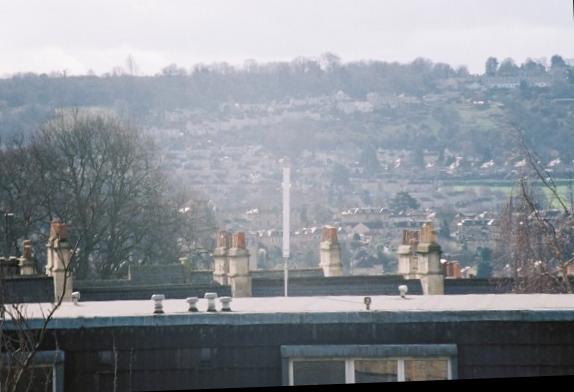
"Bath South-Side":
"Clutton":
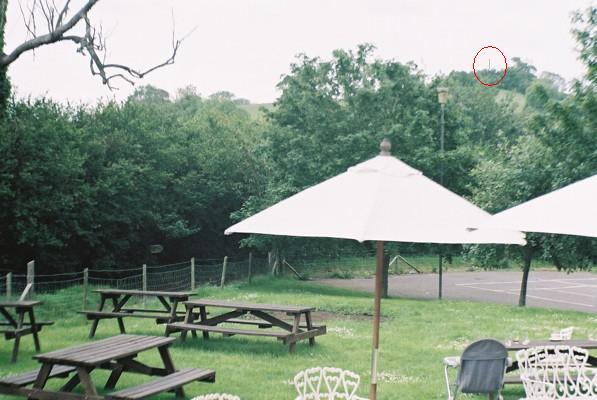
"Midsomer Norton":
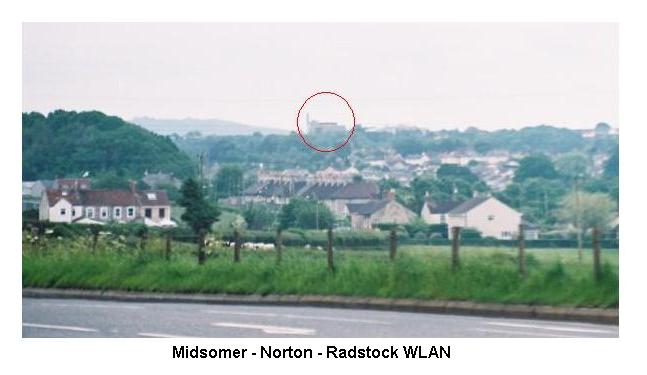
"Charterhouse":
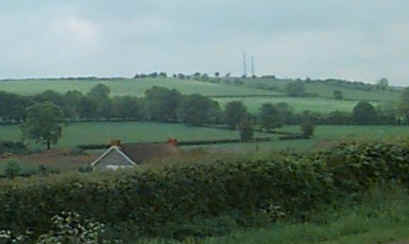
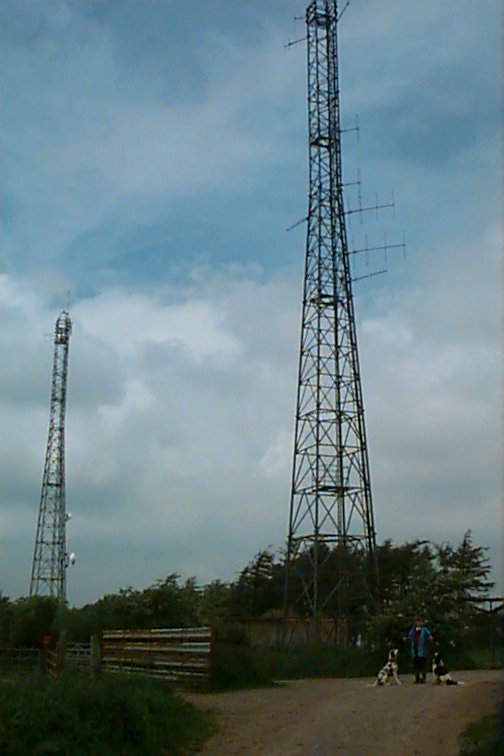
"Trowbridge":
Mike Edwards, Tom Oliva.
"Bradford-on-Avon":
"Frome":
Options for Test:
The best strategy is to demonstrate something which cannot be done without the WLAN. Finding suitable applications which really stretch the speed capabilities of a 11 MB/sec data link requires some imagination.
High quality video conferencing and "WebCam" video clips transmissions are ideal for this.
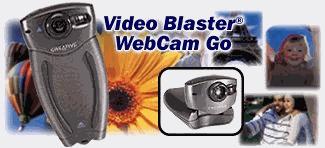
It’s a WebCam... It’s a Portable Camera... All in One!! Use it for NetMeeting® videoconferencing or video capture, then simply unplug the WebCam Go and go! Take it anywhere, photograph anything, and bring the pictures back to your computer to share with the world.
There’s finally an affordable desktop PC camera for people with an active lifestyle, and it’s only from Creative. Exceptional video quality with the power to capture, create, and communicate in full-color, full-motion video directly from your PC. Incredible images.
Price £69 inc. VAT & Shipping
Figure 5. Creative WebCam
Allowing high quality face-to-face meetings between people many miles away, should prove very popular with people who wouldn’t normally use computers. People will learn very fast how a face to face videophone meeting or interview can save many miles of unnecessary journeys.
Free two-way television should prove instantly newsworthy and provide the main long term promotional impetus for expansion of the WLAN (if so required) to homes and business locations in surrounding areas.
A WebCam in each meeting room can initiate new service activities, such as arranging local on-line public meetings. e.g. Friendly and informative meetings with Public Officials / Councilors / MPs etc.
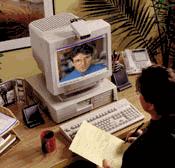
Fig.6 Video Conferencing (Intel Proshare 500)
Future development
A successful demonstration will pave the way for "The West of England WLAN" to be developed connecting a number of population centres as suggested in Fig.7. An important aspect of this development is that he new WLAN system is essentially open and public. Any computer enthusiast within sight of one of the proposed new WLAN "Telepoles" or line of sight to the rooftop omnidirectional antenna on a local centre will be able to access this new network (requiring only a WLAN adapter, rooftop antenna and User Permission).
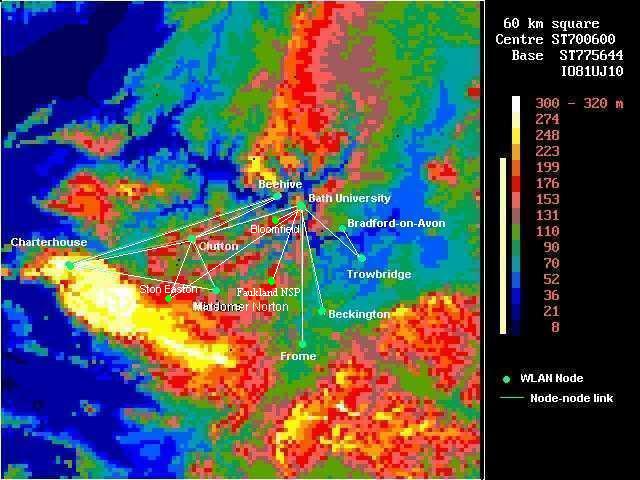
Figure 7. West of England 11,000Kbits/sec WLAN - (around City of Bath)
Security:
Methods of security developed for the Internet are applicable for the use of WLANs since the threat of interception of microwave carriers is the same.
Whilst general access to a network can be open to the public as "Guest Users" permission to fully use the WLAN and "User Permission" must be obtained as with any other multi-user system.
Regarding "eavesdropping" or "misuse"; that small number of possible unwanted users and destructive "hackers" can be dealt with under the same recent legislation which protects all unauthorized access of networks.
Wider Applications:
There are many economically important but non-profit-making WLAN applications sectors such as:-
Amateur Athletics & Sport
Parent/Teachers - Education & Academia
Medical Research & Electronics
Charitable Research
Religion & Social
Community Organisations
Theatre, Music & Arts
Hobbies
Wildlife & Environmental Surveillance
Community and Hospital Radio & Television
Local Government & Traffic Management
Voluntary Safety & Rescue Services (St. John Ambulance/Mountain Rescue etc)
And not least of all our wonderful institution The BBC. It is believed that Education and Medical sectors alone spend some 15% of UK GNP.
Ethos:
Community owned and managed WLANs now offer open un-metered access, free from call charges yet presently can provide superior internet access to all internet services than any existing technology possible over telephone wires. It will be of enormous benefit to children and young people who are typically today without even basic telephone or ISDN. Additionally for this group free local broadband can provide the physical medium for enabling entirely new and exciting ventures in Local Community Radio and Television, Free Local Telephone and free face to face Videophone Communications……..
Free broadband access can give the lowest possible cost access to quality internet based video conferencing, virtual face-to-face counseling and promote initiatives in widespread and affordable Distance Learning.
Community Broadband can encourage interest and self training in all aspects of Community Media (providing unlimited outlets for Amateur Radio & Television Productions) as well as providing opportunities for amateur level hands-on technical Network Administration and Systems Development (as a strategic wealth-creating self-training activity like Ham Radio) hitherto not seen since perhaps the Amateur BBS FidoNet days.
The birth of free, quality, high speed access to community owned and run Local ICT Networks can attract wider participation in modern neighbourhood community "co-operative" development and above all reduce an anticipated (exponentially growing) pernicious degradation on all aspects of business and social life apparent through increasingly resourced and acquisitive transnational telecoms monopolies.
With low-cost Community WLANS we (as a community) have the immediate capability of operating significant parts of the INTERNET as true municipal and community resources (such as schools, colleges, hospitals, libraries, parks, commonlands, public footpaths and open spaces). Initial studies show that our not-for-profit ethic can deliver end user connections for 7% of the existing for-profit commercial costs. (even at present one-off prices for PC WLAN cards at as much as £85 each......)
These completely NEW possibilities created by "Community WLANs" make feasible a renaissance of local communities, building communications networks with real social value within the community ethos of the liberal writings of Norbert Wiener ("The Father of Cybernetics")..... As socially and technically important as the development of private printing, free speech and broadcast radio & TV media itself.
Figure 8.
Omnidirectional and Dish Antenna
Acknowledgment & References:-
Creative "WebCam" http://www.creative.com also for £62 from:- CPC Ltd. http://www.cpc.co.uk
Community Wireless Internet Campaign wlan.org.uk
Home Counties Amateur Television Group http://www.users.dircon.co.uk/~tomgrady/hamatv.htm
Intel Proshare 500 http://www.picturetel.com
Norbet Wiener "Cybernetics" MIT 1948
Index & Glossary of Terms
3rd Generation Broadband Digital Cellular (up to 2Mbit/sec).
Adapter PC Adapter - a printed circuit board designed to slot in the internal motherboard "bus" of a PC.
Amateur Radio "For the love of.. L. ama" Radio operation for the self-training and
education of it participants without commercial or pecuniary gain.
ASCII 7 bit (128 char) American Standard Code for Information Interchange
DSL/ADSL New Digital Subscriber Line (up to 2Mbit/sec).
AP Access Point (same as WAP).
Astra Swiss based Direct Broadcasting Satellite (DBS) IAP firm.
BBS Bulletin Board Service (pre-internet amateur dial-up server technology.)
BBS FIDONET Pre internet dial-up amateur international e-mail and news network.
Bit Binary Information Digit (about 10 bits = 1 ASCII character + ctrl)
Broadband Currently taken to mean data transfer of 2Mbit/sec or greater.
BT British Telecom PLC. (Principal U.K. main PSTN operator)
Bus Non type-specific multi-contact interconnection system
(From electrical terminology for a common connection point - Busbar)
Card System on a printed circuit board (also adapter)
CSMA Carrier Sensed Multiple Access (how a single channel is shared by many
simultaneous users without polling).
Dish Dish shaped parabolic curve reflector for high gain microwave antenna
systems.
Downlink Data path from a distant computer (cf. Uplink).
DSSS Direct Sequence Spread Spectrum (means of reducing co-channel radio
interference)
Ethernet Proprietary name for network standard. Same as IEEE802.3
GHz 1,000,000,000 Hz or cycles per second.
Hackers People who make unauthorized entry to computer systems.
Ham Radio American term for the Amateur Radio Service.
IAP Organisation providing "Internet Access".
ICT Information & Communications Technology (see IT).
IEEE Institute of Electrical & Electronic Engineers (USA).
ISA Industry Standard (PC) Architecture also Instrument Society of America.
ISDN Integrated Systems Digital Network.
IT Earlier used to describe ICT.
LAN Local Area Network.
LINUX UNIX-like operating system for PCs.
Mbit/sec Million bits per second.
MHz Million Hertz (cycles) per second.
NOS Network Operating System (Wireless).
Omnidirectional Omnidirectional: antenna with all round equal response.
PC Personal Computer (IBM originated standard).
PCB Printed Circuit Board.
PCI Current PC bus Peripheral Component Interconnect(ion)
PCMCIA Personal Computer Memory Card International Association
TCP/IP Transmission Control Protocol / Internet Protocol
TEC Training and Education Council
Uplink Data path to a distant computer (cf. Downlink)
Video Television Baseband Signal
WEBCAST Using the Internet (WWW) for media broadcasting
WAN Wide Area Network (usually cable based)
WAP Wireless Applications Protocol also Wireless Access Point.
WLAN Wireless Local Area Network (Typically a high speed co-axial cable
interconnection in the form of a 10-100Mbit/sec Ethernet).